Why Do I Have 2 Keyboards in Device Manager? Reasons And Solutions
if you are here, chances are that you’ve only recently discovered that there is more than one keyboard shown in the device manager. While this isn’t something you should worry about immediately, however, if you are having trouble installing newer input devices, this is something you should look into. In that case, it’s worth finding the main keyboard and uninstalling the rest.
This article is for the people who complain about why I have 2 keyboards in the device manager, why the device manager shows multiple devices of the same category, and how to fix it. keep in mind that most of the time, it is rather a feature than a bug and needs no fixing.
While attempting any fix in the device manager, you should proceed with caution. Because uninstalling or removing any essential device may render your device unusable. Let’s begin.
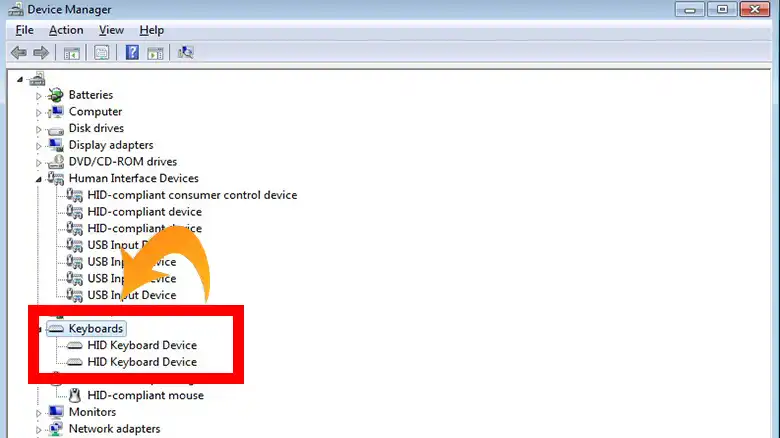
Reasons for More than One Keyboard in the Device Manager
First of all, there are multiple ways in which devices interact with Windows. So, while a keyboard may seem like only one input device to you, chances are that there are multiple functionalities in your keyboard, like multimedia buttons. So, they create multiple versions of themselves in the device manager for better detection. Another reason for this multiplicity is that it helps with the detection of simultaneous pressing of keyboard buttons.
If you are using a high-end keyboard and mouse device like the Razer DeathAdder Chroma, chances are that you are going to find it as a keyboard device in the device manager, that’s because it used programmable actions which, to Windows, is a keyboard action.
If you are using a mechanical keyboard, or gaming-centric keyboards too, they employ something called NKRO or the N-Key Rollover which ensures proper keypress detection under heavy usage, so you won’t miss any input, which is particularly handy during gaming. To scan each keypress individually, those keyboards install a separate copy of HID keyboard.
That’s why there are so many keyboards in Device Manager.
How to Fix Multiple Keyboards in Device Manager
Depending on how many keyboards you are using on your computer, the outcome of deleting a keyboard in the device manager will vary. Again, having more than one keyboard shown in the device manager is not a sign of any problem, hence it may not need any fix at all.
To make sure you aren’t deleting the primary keyboard of your computer, check for the keyboard’s property in the device manager, as shown in the picture.
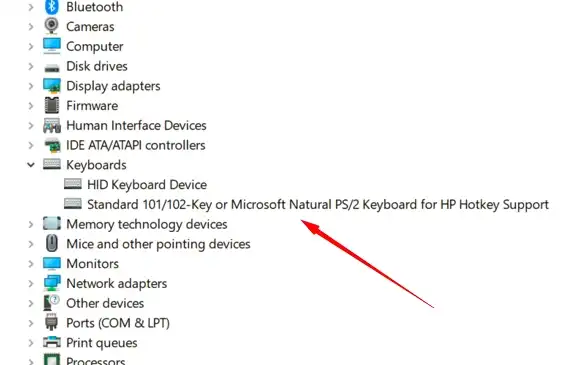
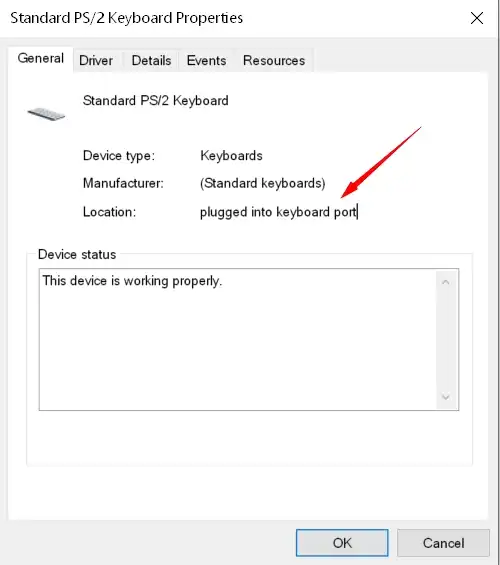
If it shows plugged into keyboard port, then it’s the main one. Otherwise, you can go ahead and delete it without any problem.
1. Delete HID Keyboard Device
You can delete and it normally gives you no issue. To delete it, in the device manager right click on the HID Keyboard Device and select uninstall as shown in the screenshot.
Afterward, if your keyboard feels janky to use, just unplug and plug in the keyboard again, this will install the device driver again. If that’s the case, then it’s a good indication that your computer needs that HID driver to function properly using that particular keyboard model.
2. Update the Keyboard Driver
Sometimes it’s just a driver issue. in that case, we recommend that you update the driver of your keyboard. Again, go to the device manager, right-click on the keyboard (the main one preferably, we’ve discussed how you can find it), and select update driver.
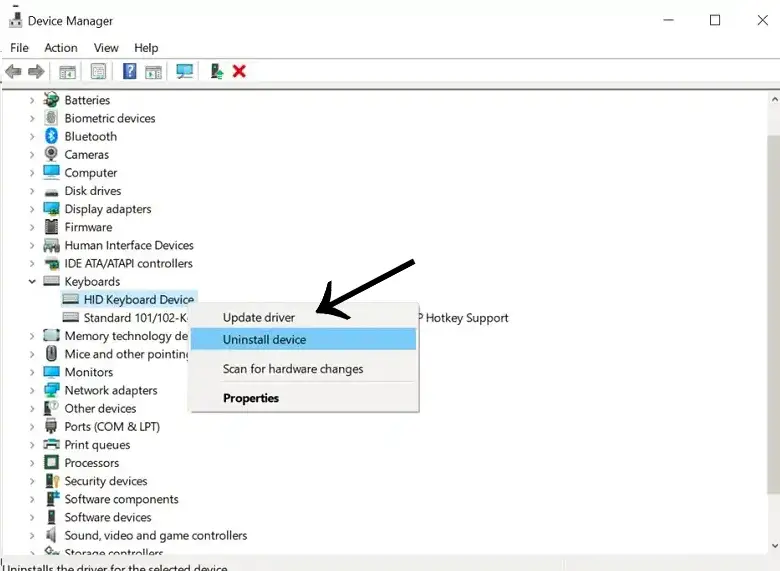
Select Search automatically for drivers and then follow the on-screen instructions.
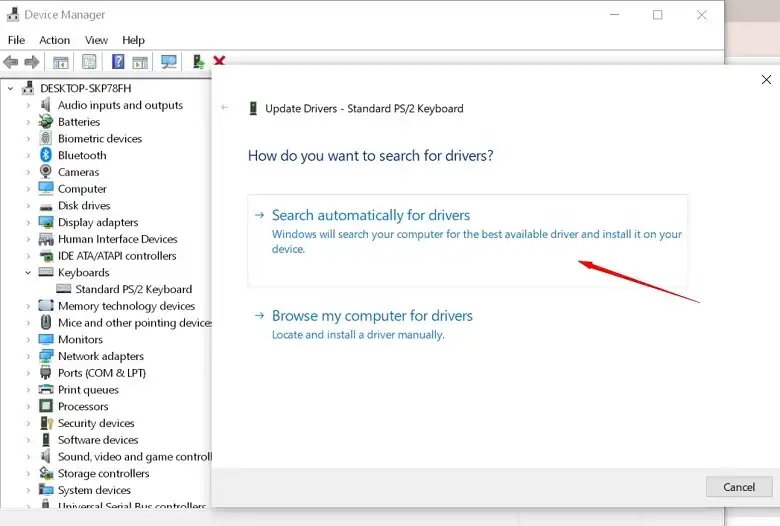
3. Showing Hidden Devices
Chances are that you’ve connected the same keyboard to different USB ports of your PC and this leads to showing multiple keyboards on the device manager. It is fairly easy to find them and uninstall them. Here’s how you can do it. Go to device manager and select Show hidden devices from the View menu.
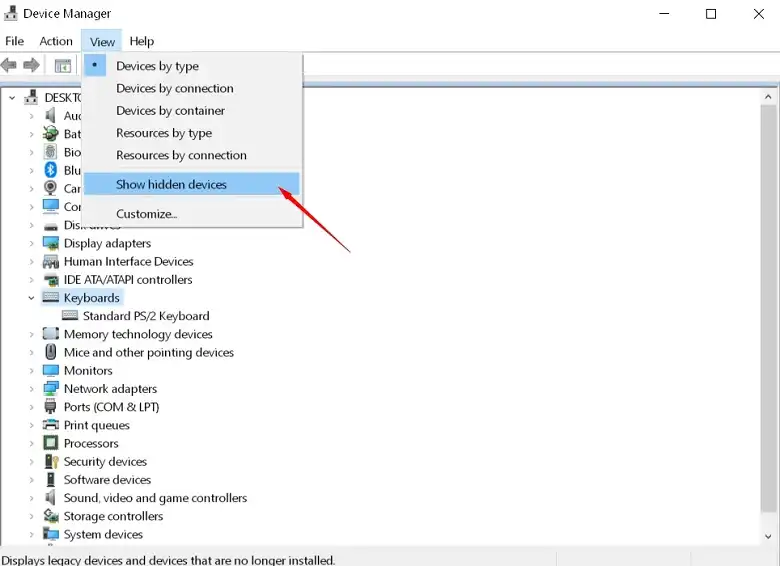
Now type advanced system settings in the Start Menu and open it
Click on the System Variables and then select New under System Variables
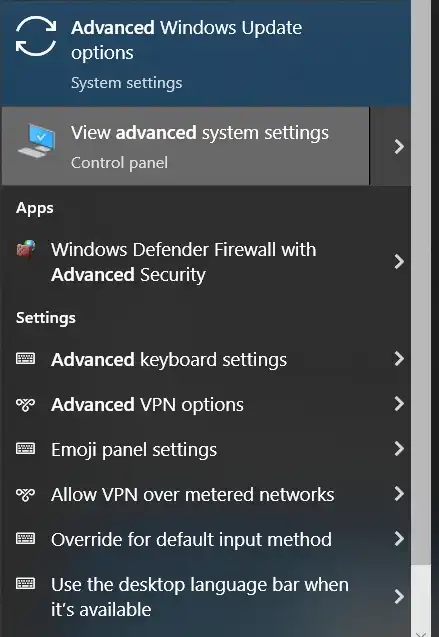
Now copy and paste this in the 1st box labeled Variable name, under Variable value, put 1.

Click Ok. Close everything and open the Device Manager again. This time you’ll see multiple devices under the keyboard section that are greyed out.
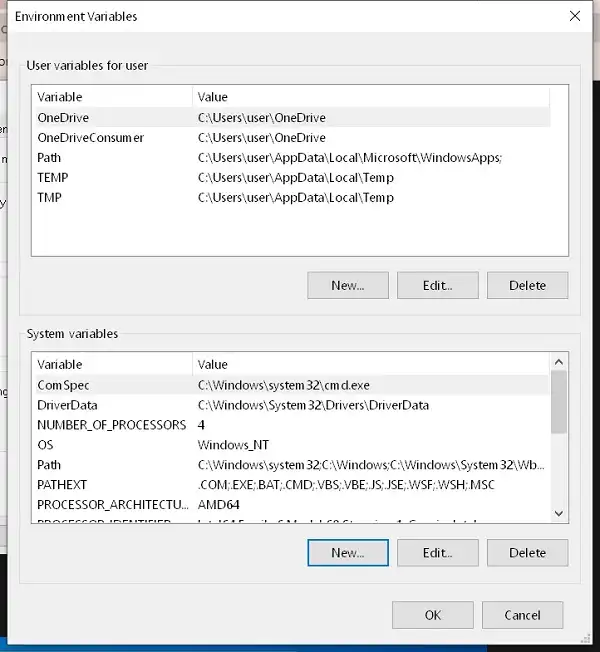
Here we’ve marked two HID Keyboard Devices that are greyed out on our device manager. You can uninstall the greyed-out devices. They indicate that they were connected to the computer before but are not in use anymore. But Windows leave them to be, for a faster connection, should you decide to use them again.
4. Use the Device Cleanup Tool
The device cleanup tool is a third-party application. You can google it, or use any other application that shows USB Device Tree.
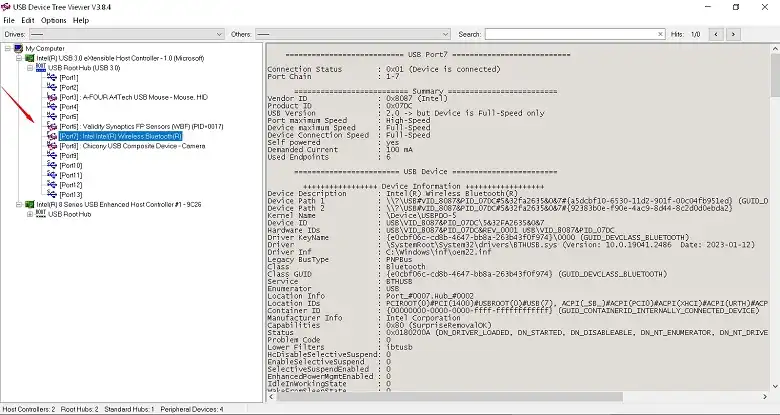
Here in the screenshot, you can see that it shows what devices are connected to which USB port. Now you can detect which devices are not connected yes showing in the device manager. Remove them as you wish without having to worry about any unresponsive devices.
5. Use gpedit.msc
Press Windows key + R to open the run. Type gpedit.msc
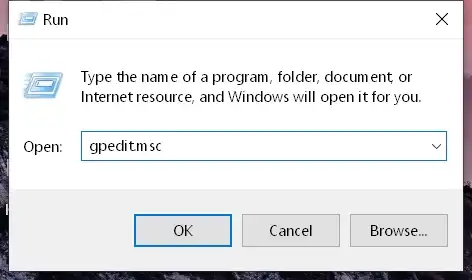
Press enter, this will open the Local group policy editor menu.

First, expand the Administrative template (marked 1 in the screenshot)
Then expand the System section.
Then the Device Installation section and under that, open the Device Installation Restrictions.
Double-click on the Prevent installation of devices not described by other policy (marked 5 in the picture)
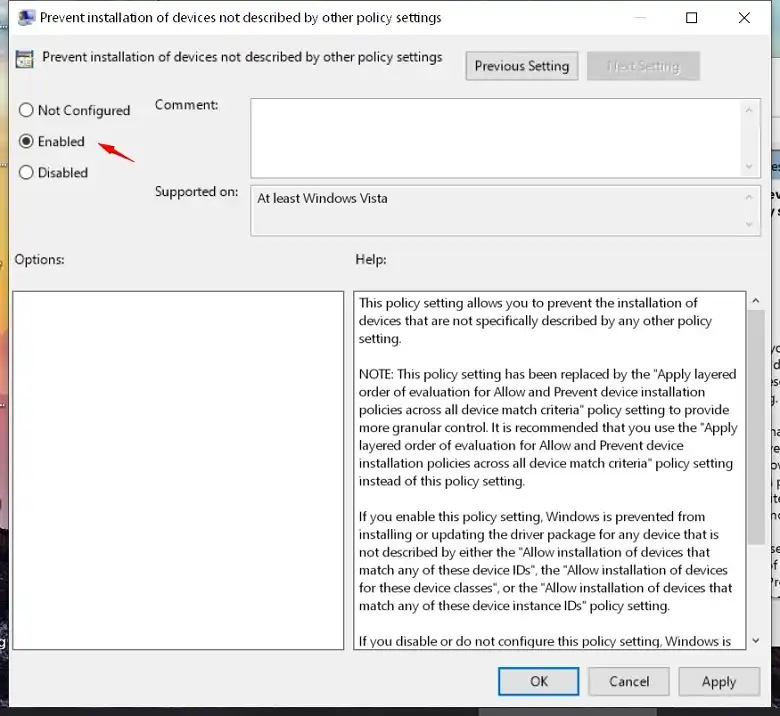
In the newly-opened window, select Enable and click Ok. Now your Windows will prevent any duplication of devices and drivers in the device manager by itself.
This is a more future-proof solution as it prevents future duplication as well.
6. Update Windows
Finally, give this old tried and tested method a try. Sometimes a Windows update will force Windows to refresh its device tree automatically, removing old and unused devices and allowing it to merge duplicate devices.
7. Should I Disable HID?
If no functionality is broken, leaving HID keyboards on is always recommended.
Final Thoughts
“If it isn’t broke, don’t fix it”, Thomas Bertram Lance once said so. In this case, we recommend this approach as well. However, an unauthorized device can lead to security issues, something that you shouldn’t overlook as well.
We recommend doing a regular checkup of the device manager. Research properly before removing any device. Thanks for reading.
![[Answered] Can You Play Dark Souls with Keyboard and Mouse?](https://keyboardhunter.com/wp-content/uploads/2023/05/Can-You-Play-Dark-Souls-with-Keyboard-and-Mouse-768x431.webp)
![[Explained] Can Trojan Affect Keyboard?](https://keyboardhunter.com/wp-content/uploads/2023/02/Can-Trojan-Affect-Keyboard-768x431.webp)
![[Fixed] Mini Keyboard Not Working with Android Box](https://keyboardhunter.com/wp-content/uploads/2023/10/Mini-Keyboard-Not-Working-with-Android-Box-768x431.webp)

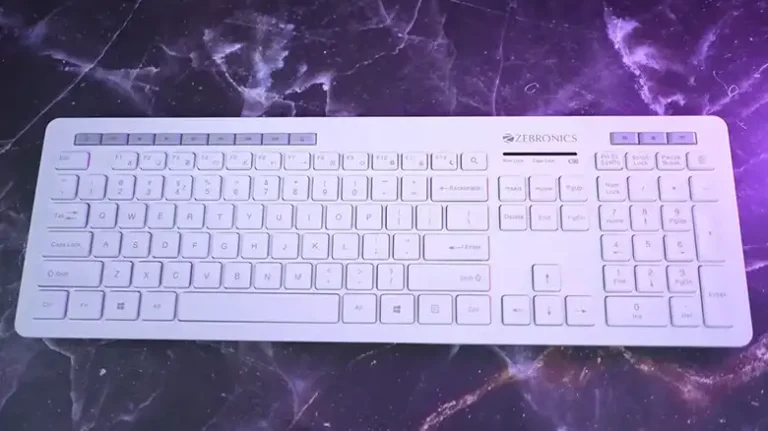
![[Explained] Do Pudding Keycaps Work on Any Keyboard?](https://keyboardhunter.com/wp-content/uploads/2023/10/Do-Pudding-Keycaps-Work-on-Any-Keyboard-768x431.webp)